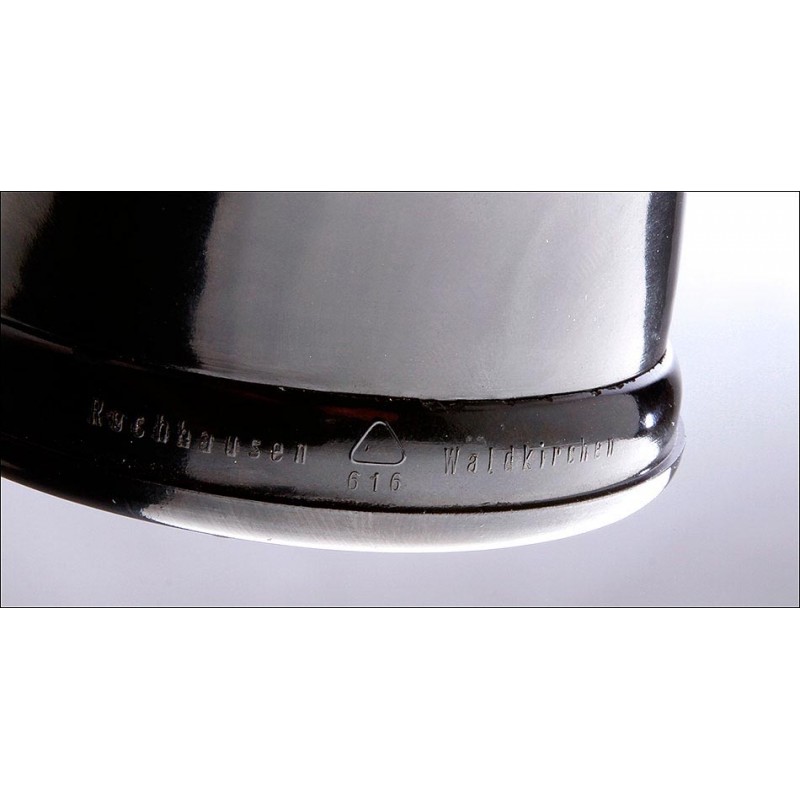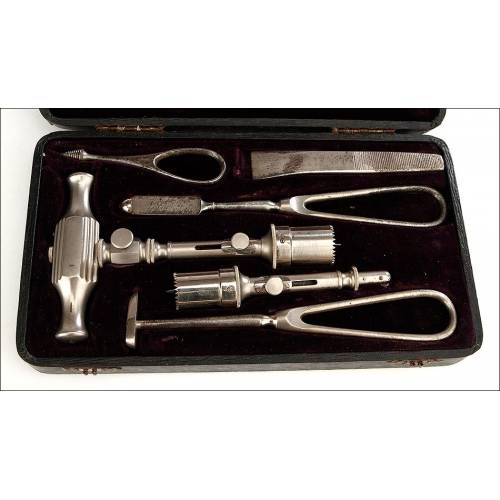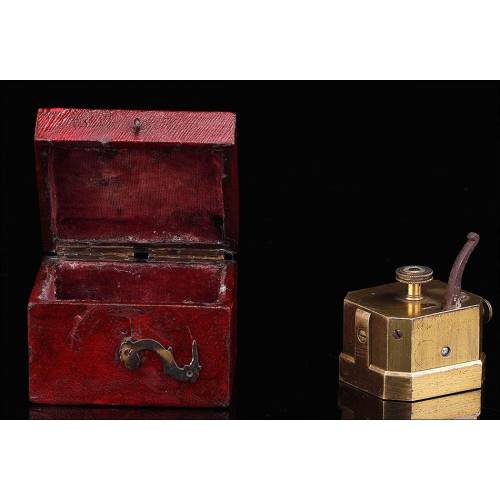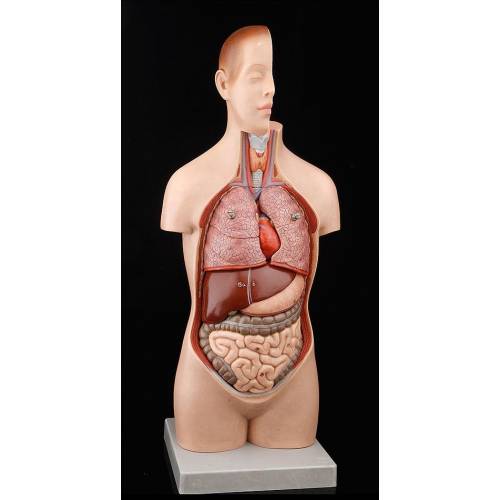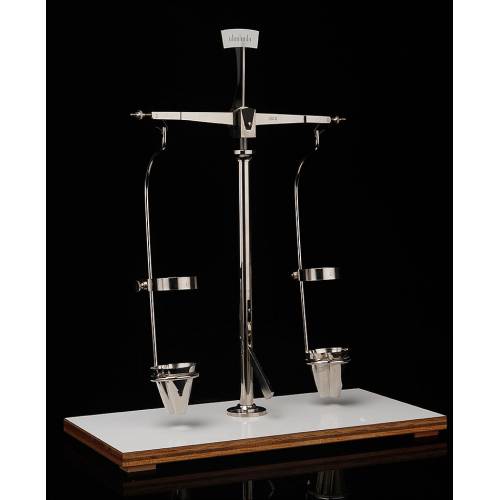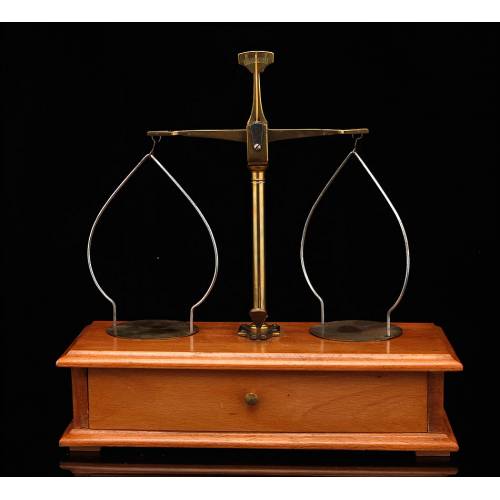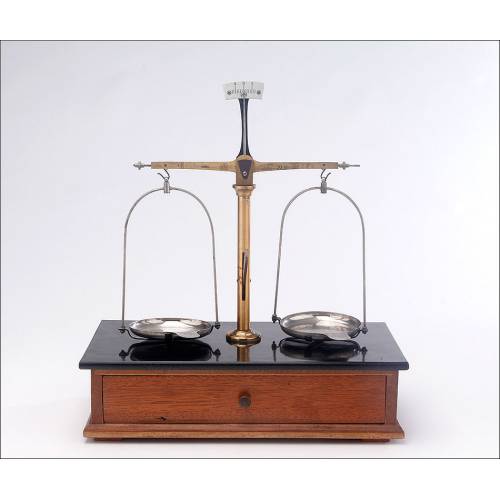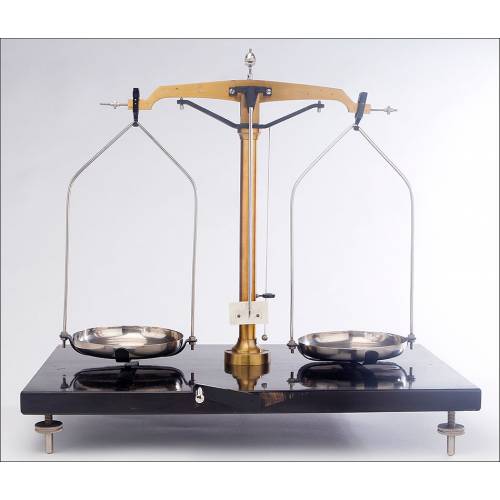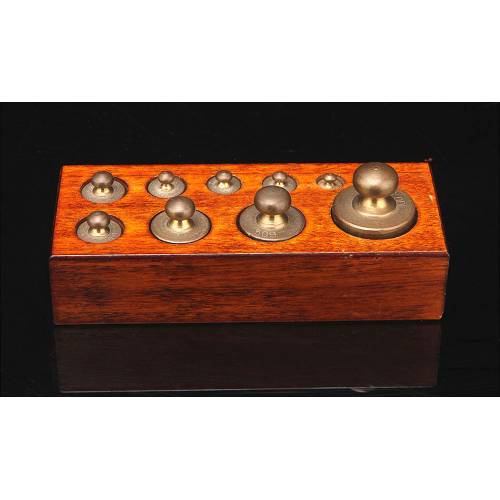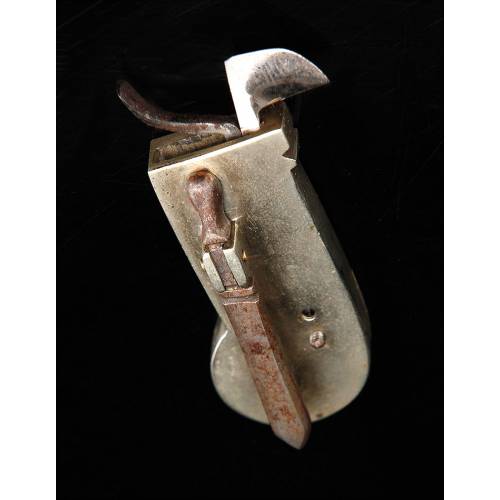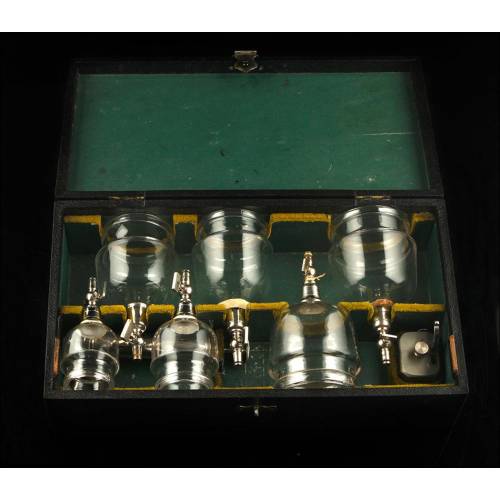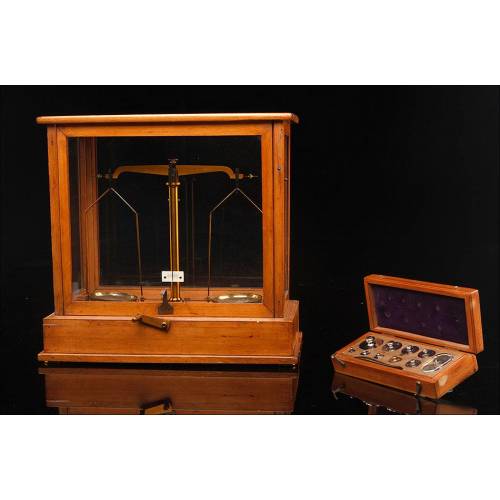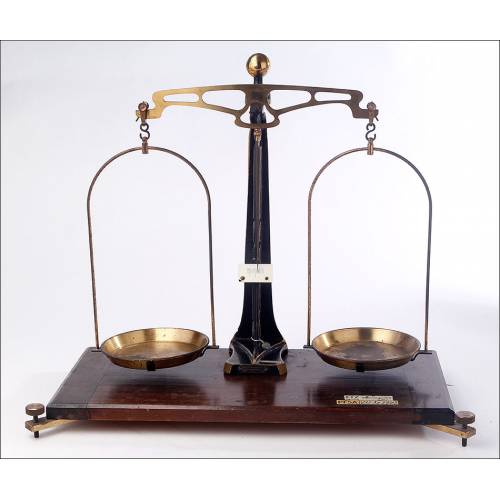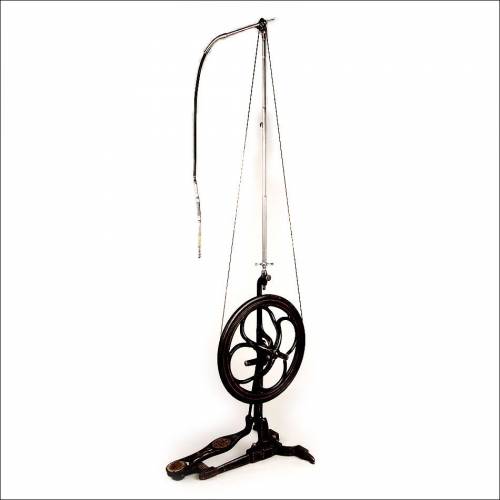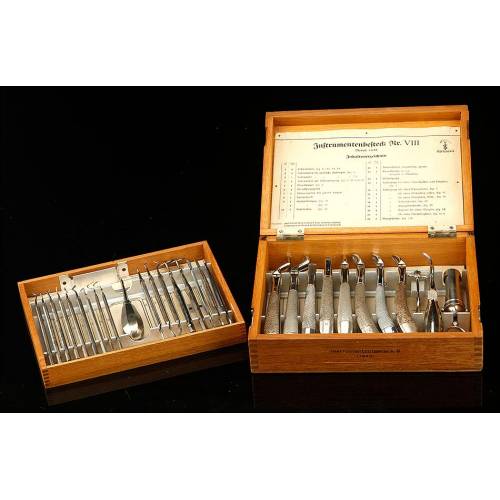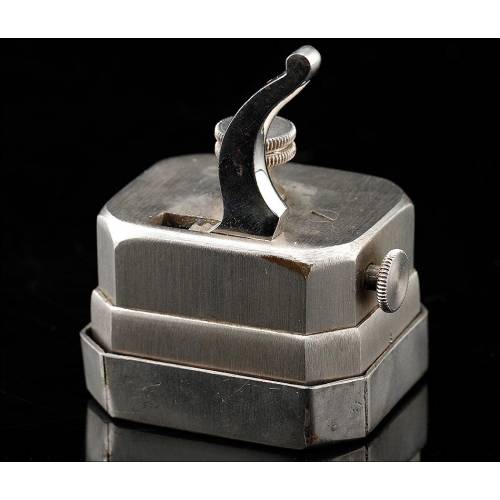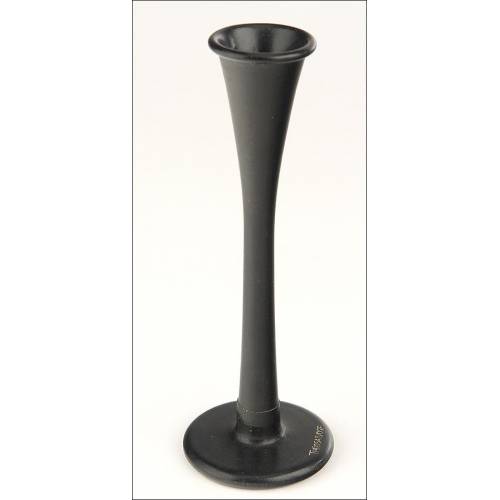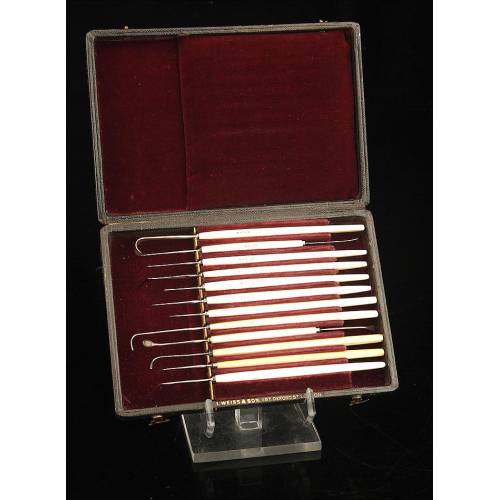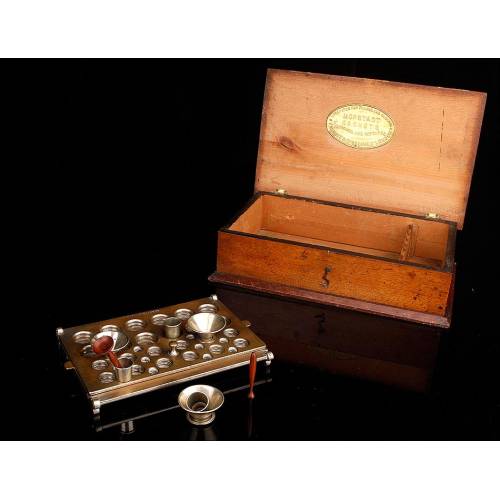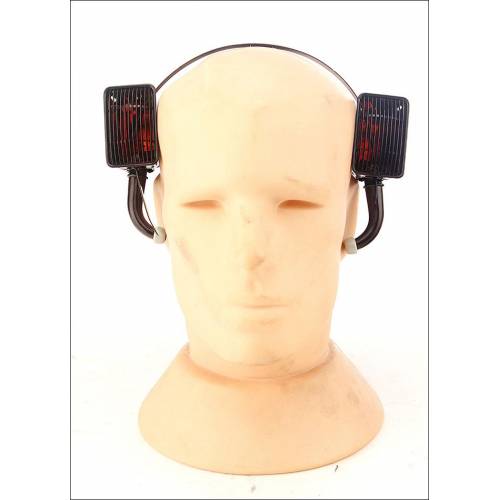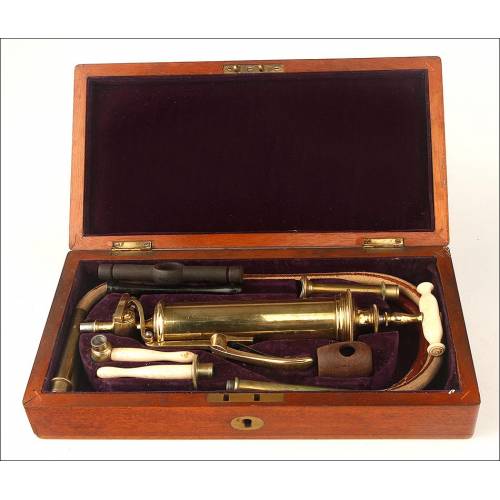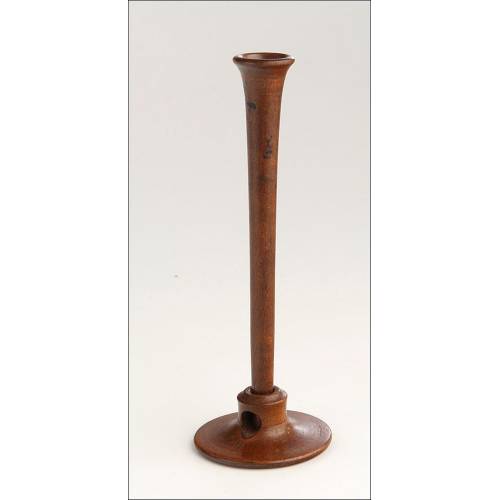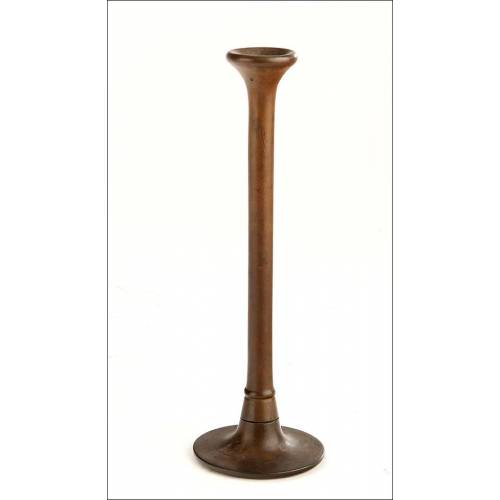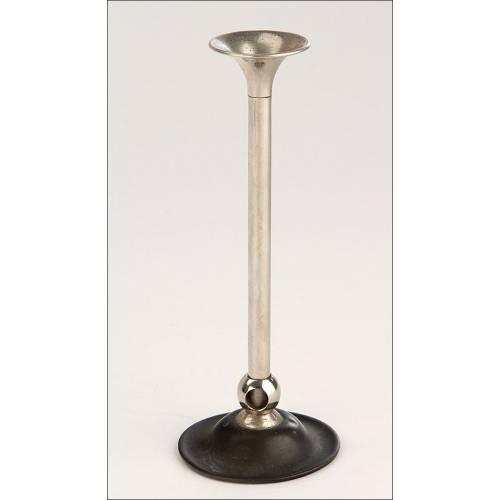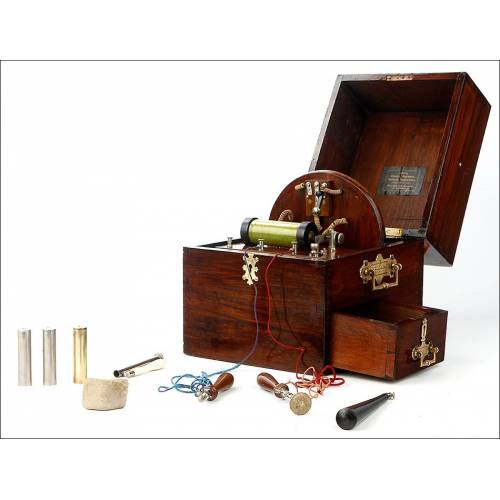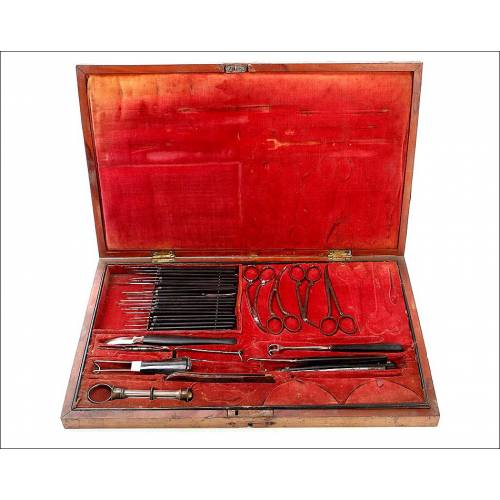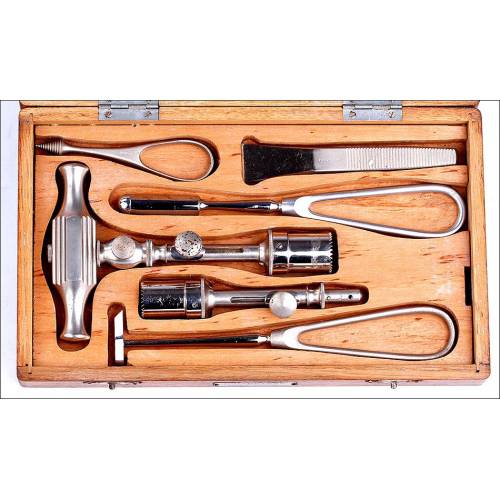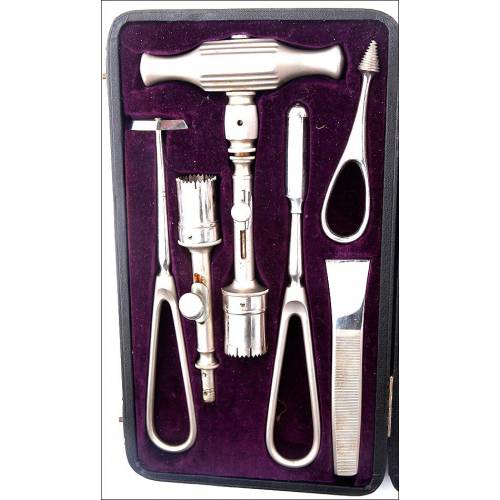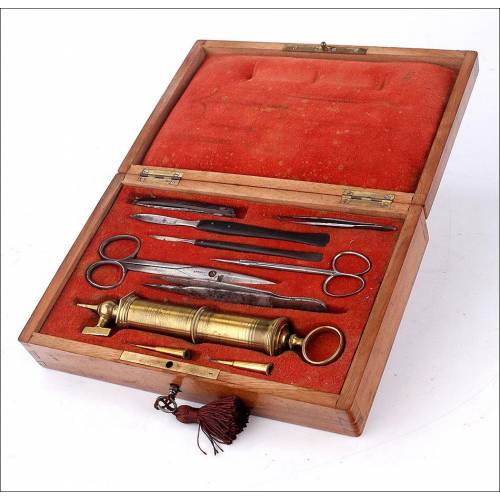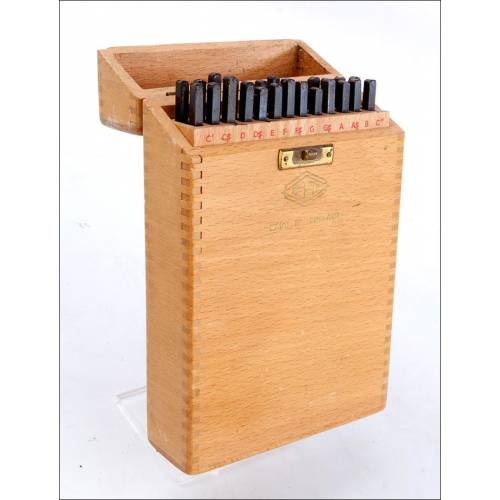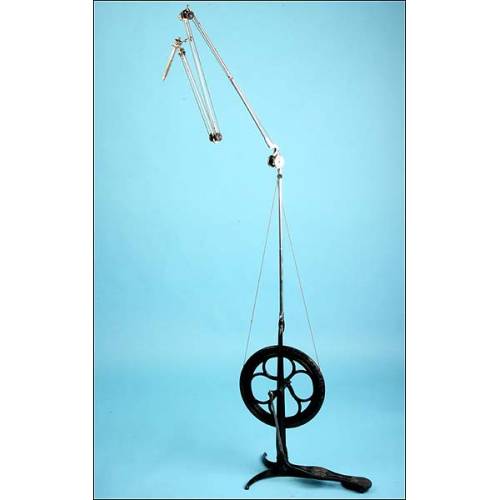A-648
Bakelite Trumpet, 1930's.
Ear trumpet made in black bakelite in the 30's and 40's of the 20th century. Very well preserved.
Sold!
Smart ear trumpet made of black baquelite in the 1930s. This curious piece is in very good condition and working order, and it is a good sample of the devices that were manufactured almost one hundred years ago to palliate hearing impairment. This ear trumpet is composed of two parts: a wider piece with the sound amplifier, and a narrower end designed to be put into the ear. The black bakelite this piece is made of is very well preserved: its surface looks shiny and regular and there is a remarkable silvery metal ring that embellishes the wider pieces inside end, at the point where it connects with the slimmest part of this ear trumpet.The end that the user must introduce into his or her ear when using the trumpet is made of white bakelite. This piece is slightly curved for an easier use. In the narrowest end we can see a small opening designed to hang the trumpet from a chain or cord. The instruments mouth is covered with a series of slim bakelite parallel pieces that lead the sounds inside the utensil. These devices started being produced in the 17th century though it is believed that there could have existed similar items before. The first written description of the operation of an ear trumpet appears in a manual by Jean Leurechon (1642). These utensil soon became highly popular and started to be produced in different materials, some of them quite expensive. The ear trumpet producer F. C. Rein and Son in London ended activity in 1963 as the last company of its kind.Measurements: Width: 14.1 in/36 cm. Height: 3.5 in/9 cm.

